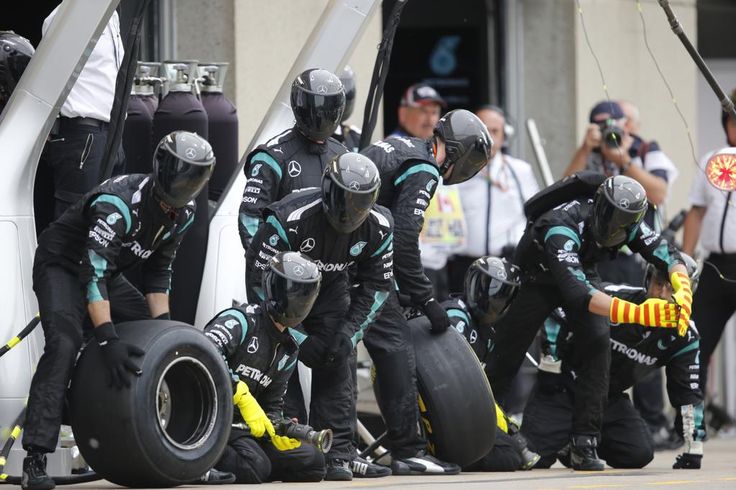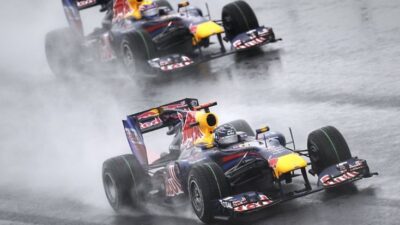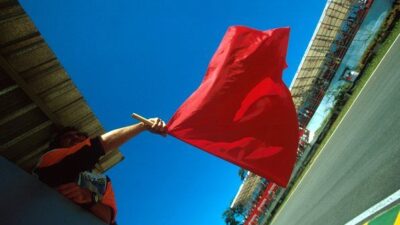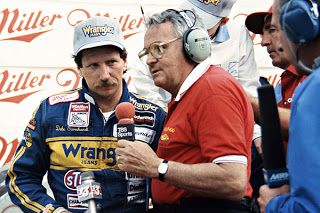When drivers cross the finish line in first place, they often get all the credit. But behind every racing victory stands a team of highly skilled professionals who can make or break a race in just seconds. Pit crews are the decisive factor between winning and losing, with their ability to execute lightning-fast pit stops that can gain or lose crucial track positions during a race.
The difference between a good pit crew and a great one can be measured in fractions of seconds. Red Bull Racing holds the world record for the fastest pit stop at 1.92 seconds, demonstrating the incredible precision these teams achieve. Each crew member has a specific role, from tire changes to fuel management, all coordinated with military-like precision.
Modern racing has transformed pit stops from simple maintenance breaks into strategic weapons. Teams use these moments to change race positions, adapt to weather conditions, and execute complex race strategies. The best pit crews don’t just service cars quickly – they think several moves ahead, turning every pit stop into an opportunity to gain a competitive advantage.
Key Takeaways
- Pit crews directly impact race outcomes through split-second decisions and lightning-fast pit stops that can change track positions
- Each crew member has specialized roles requiring extensive training, from tire changers to fuel management experts
- Effective communication and teamwork during high-pressure situations separate winning teams from the rest of the field
How Pit Crews Influence Race Outcomes
Pit crews directly affect race results through precise timing, strategic decisions, and flawless execution during critical moments. Their work determines whether drivers gain positions, maintain competitive pace, or fall behind competitors.
Impact on Overall Race Performance
Pit crews can make the difference between winning and losing in Formula 1 races. A well-coordinated team performs stops in as little as 2.5 seconds. This speed gives drivers crucial advantages during races.
Key Performance Areas:
- Tire changes and replacements
- Car adjustments and minor repairs
- Communication with race engineers
- Strategic timing decisions
Each crew member has specific tasks that must work together perfectly. Tire changers focus on wheel removal and installation. Jack operators lift the car efficiently for access.
The coordination between these roles creates seamless operations. Poor timing or mistakes can cost valuable track positions. Teams that consistently perform fast stops often see better race finishes.
NASCAR pit stops typically range from 12 to 16 seconds, depending on services performed. This longer time frame still requires the same level of precision and teamwork.
Importance of Speed and Precision
Speed and accuracy work together to create winning pit stops. Red Bull holds the world record at 1.92 seconds for the fastest Formula 1 pit stop. This achievement shows what perfect execution can accomplish.
Critical Elements for Success:
| Element | Impact |
|---|---|
| Specialized roles | Each person focuses on one task |
| Advanced training | Reduces errors under pressure |
| Clear communication | Prevents confusion and delays |
Every millisecond matters in competitive motorsport. Teams practice constantly to maintain their speed and reduce mistakes. Advanced training and drills enhance crew performance under race pressure.
Precision prevents costly errors during stops. A loose wheel or fuel spill can end a race immediately. Teams use specialized equipment like automated wheel guns to ensure reliable results.
The combination of speed and accuracy gives teams competitive advantages. Faster stops mean less time lost in the pit lane. Better precision means fewer safety risks and race problems.
Role in Race Strategy and Positioning
Pit crews execute strategic decisions that determine final race positions. They adapt their plans based on weather conditions, tire wear, and competitor actions. Strategic pit stop timing can lead to significant advantages that influence race standings.
Strategic Considerations:
- Tire selection for different track conditions
- Fuel calculations for optimal race distance
- Timing decisions to avoid traffic or capitalize on opportunities
Teams monitor competitors closely during races. They adjust their pit windows to gain track position or maintain advantages. A well-timed stop can move a driver from fifth place to second place.
Weather changes create strategic opportunities for smart pit crews. They switch to rain tires before competitors or stay on dry tires when conditions improve. These decisions often determine race winners.
Pit crews are often the unsung strategists pulling strings from the sidelines. They communicate constantly with race engineers about optimal stop timing. Their recommendations help drivers make crucial decisions during races.
Key Roles and Responsibilities in the Pit Crew
Pit crew members have specialized roles that require split-second timing and perfect coordination. Each position demands specific skills, from tire changers who must work with precision tools to crew chiefs who orchestrate the entire operation.
Tire Changers and Tire Carriers
Tire changers are responsible for removing and installing wheels during pit stops. They use specialized pneumatic wheel guns that can loosen and tighten lug nuts in milliseconds.
Each tire changer focuses on specific wheels to avoid confusion. The front tire changer handles the front wheels while the rear tire changer manages the back wheels.
Tire carriers work alongside the changers by transporting new tires to the car. They must position the new tire perfectly while removing the old one immediately.
Key responsibilities include:
- Operating high-speed wheel guns
- Positioning tires with exact precision
- Working in perfect sync with carriers
- Maintaining equipment between races
The coordination between changers and carriers determines pit stop speed. A single mistake can cost valuable seconds and race positions.
Fueler and Refueling Duties
The fueler manages all aspects of adding fuel during pit stops. This role requires speed and accuracy to avoid spills or overfilling.
Note: Formula 1 banned refueling during races in 2010 for safety reasons. However, other racing series like NASCAR and endurance racing still use refueling as part of pit strategy.
Fuelers must calculate exact fuel amounts needed. Too little fuel means extra stops, while too much adds unnecessary weight that slows the car.
Critical fueling tasks:
- Connecting fuel hoses quickly
- Monitoring fuel flow rates
- Preventing dangerous spills
- Calculating optimal fuel loads
Fuel management tactics can make the difference between winning and losing. Strategic fuel decisions affect car weight and race strategy throughout the entire event.
Jack Operator and Jackman Tasks
The jack operator lifts the car off the ground so tire changers can work. They use specialized racing jacks that can raise a car in under two seconds.
Jack operators must position themselves perfectly to avoid interfering with other crew members. Timing is critical since tire work cannot begin until the car is properly lifted.
Primary jackman duties:
- Positioning jack under designated lift points
- Raising car with maximum speed
- Lowering car once tire changes complete
- Ensuring car stability during service
The jackman signals when the car is secure. This communication prevents accidents and ensures tire changers can work safely at high speed.
Crew Chief and Team Leadership
The crew chief oversees the entire pit stop operation and makes strategic decisions. They coordinate all crew members and communicate directly with the driver.
Crew chiefs monitor race conditions and competitor strategies. They decide when to pit and what services the car needs during each stop.
Leadership responsibilities include:
- Coordinating all pit crew activities
- Making real-time strategic decisions
- Communicating with drivers and spotters
- Training crew members for optimal performance
The crew chief signals when the pit stop is complete and the driver can leave. This final clearance ensures all work is finished and tools are clear of the car.
They also analyze pit stop performance after each race. This review helps identify areas for improvement and maintains the team’s competitive edge.
Techniques and Strategies for Effective Pit Stops
Successful pit stops depend on precise tire change methods, strategic fuel management, and the ability to make quick repairs under pressure. Teams that master these core elements gain crucial seconds that often determine race outcomes.
Tire Change Methods and Tire Compounds
Modern F1 teams execute tire changes with military precision. Each wheel gunner has a specific role during the 2-3 second window.
The front jack operator lifts the car within 0.3 seconds. Wheel gunners engage their pneumatic tools while the car is still moving to the ground.
Key timing for tire changes:
- Wheels off: 0.6 seconds
- New wheels fitted: 1.2 seconds
- Guns back on nuts: 1.4 seconds
- Final confirmation: 1.9 seconds
Tire compound strategy requires careful planning. Teams analyze track temperature, weather conditions, and race distance to select optimal compounds.
Soft compounds offer better grip but wear faster. Hard compounds last longer but provide less performance. Medium compounds balance both factors.
Strategic tire choices can create overtaking opportunities. Fresh soft tires give drivers pace advantages over competitors on older, harder compounds.
Optimizing Fuel Loads and Refueling
Fuel strategy significantly impacts race performance and pit stop timing. Teams calculate precise fuel loads based on race distance, weather, and safety car possibilities.
Lighter fuel loads improve lap times but require more pit stops. Heavier loads reduce stops but slow the car initially.
Fuel considerations include:
- Track position: Staying out longer can gain positions during competitor pit stops
- Tire degradation: Heavy fuel accelerates tire wear
- Safety car windows: Unexpected cautions change fuel strategy completely
Teams monitor fuel consumption in real-time. Engineers adjust strategy based on driver feedback and changing track conditions.
Modern F1 banned refueling in 2010. However, other racing series still use strategic refueling during pit stops to gain competitive advantages.
Rapid Repairs and Adjustments
Pit crews must handle unexpected repairs quickly. Preparation time is crucial for smooth operations during these high-pressure situations.
Front wing adjustments happen during regular stops. Wing-winders use pre-set torque drivers to change flap angles instantly.
Common rapid repairs include:
- Damaged nose cone replacement
- Punctured tire changes
- Steering wheel swaps
- Debris removal from radiators
Stabilizer crew members have the most variable jobs. They steady the car, clean driver visors, and assist with emergency repairs when needed.
Teams practice various scenarios daily. Standard practice includes 8-10 iterations to keep crews sharp without causing fatigue.
Emergency repairs require split-second decisions. Crew chiefs must balance repair time against potential race position losses.
Side-jack operators handle puncture repairs. This specialized equipment allows wheel changes when cars cannot reach normal pit positions.
Training and Physical Demands of Pit Crew Members
Pit crew members must maintain peak physical condition and master specialized skills to perform under extreme pressure. Physical training programs focus on strength, agility, and endurance, while role-specific development ensures each team member can execute their duties with precision during crucial pit stops.
Physical Training and Fitness Requirements
Physical fitness and agility are essential for pit crew members who must quickly perform maintenance tasks during high-pressure pit stops. NASCAR teams recruit athletes from college sports like football and wrestling because these backgrounds provide the necessary strength and mental toughness.
Each role on a pit crew requires consistent strength, agility, and endurance. Teams work on all three areas throughout the year with dedicated training programs.
Key Physical Requirements:
- Strength: Lifting heavy tires and operating pneumatic tools
- Speed: Completing tire changes in under 12 seconds
- Stamina: Maintaining performance across long race weekends
- Coordination: Working precisely alongside teammates
Weight training plays a vital role in developing muscular strength needed for pit crew duties. Teams understand this importance and make strength training a priority.
Quick reflexes and physical strength are essential, which explains why many pit crew members come from athletic backgrounds in other sports.
Role-Specific Skill Development
Prospective pit crew members undergo rigorous training programs that focus on developing precision for specific tasks like tire changes, fueling, and car adjustments during pit stops.
Training represents pit-stop simulation where crew members practice their exact roles repeatedly. This simulation-based approach helps teams perfect their timing and coordination.
Training Methods Include:
- Live simulations: Practicing under race conditions
- Virtual reality programs: Preparing for high-pressure situations
- Repetitive drills: Building muscle memory for each task
- Team coordination exercises: Synchronizing movements
Virtual reality training programs prepare crews for high-pressure situations by simulating live race scenarios. This allows crew members to practice and refine techniques without the stakes of an actual race.
Training sessions simulate real race conditions, allowing crew members to practice their roles in controlled environments. This preparation builds the teamwork and precision required for successful pit stops.
Communication and Teamwork During Races
Effective communication during car races involves seamless information exchange between drivers, pit crews, and strategists. Advanced headset technology enables instant data sharing about tire conditions, fuel levels, and race strategy adjustments.
Real-Time Communication Systems
Modern racing teams rely on sophisticated communication networks to coordinate split-second decisions. The pit crew maintains constant contact with drivers through specialized radio systems that transmit critical data instantly.
Key Communication Elements:
- Driver feedback on tire wear and handling
- Fuel consumption monitoring and alerts
- Track position updates from spotters
- Weather condition reports
In NASCAR, each member has a vital role in maintaining communication flow. The pit crew provides split-second feedback on tire wear, fuel levels, and strategy adjustments.
Race engineers serve as the primary link between technical teams and drivers. They process incoming data from multiple sources and relay actionable information through clear, concise messages.
Communication protocols ensure no critical information gets lost during high-pressure moments. Teams establish specific terminology and response procedures that every crew member understands completely.
Headsets and Technology in the Pit Lane
Advanced headset systems enable pit crews to communicate across noisy race environments effectively. These devices feature noise-canceling technology and multiple communication channels for different team functions.
Technology Features:
| Component | Function |
|---|---|
| Noise canceling | Filters engine and crowd noise |
| Multiple channels | Separate driver, crew, and strategy communications |
| Hands-free operation | Allows crew members to work while talking |
| Digital clarity | Ensures clear transmission of critical data |
Teams use encrypted radio frequencies to prevent competitors from intercepting strategic communications. Backup systems activate automatically if primary communication channels fail during races.
Crew chiefs monitor all communication channels simultaneously through specialized control panels. They can instantly connect different team members or switch between private and team-wide broadcasts as needed.
Digital displays integrated with headset systems show real-time telemetry data. This technology helps crew members make informed decisions without breaking communication flow with other team members.
Pit Crew Operations Across Popular Motorsport Series
Different racing series have unique pit crew structures and regulations that directly impact race strategies. Formula 1 pit crews execute precise choreography under strict personnel limits, while NASCAR teams operate with different crew sizes and equipment constraints.
Formula 1 Pit Crew Dynamics
Formula 1 pit stops represent the pinnacle of precision timing in motorsport. Teams can use a maximum of 13 crew members during pit stops, with each person assigned specific tasks.
The crew includes two tire changers per wheel, one wheel gun operator per wheel, and one jack operator at each end of the car. Additional crew members handle the car’s front and rear jacks.
Typical F1 pit stop breakdown:
- Front jack operator – lifts front of car
- Rear jack operator – lifts rear of car
- 4 wheel gun operators – remove wheel nuts
- 4 tire on/off specialists – handle tire changes
- 2 stabilizers – keep car steady
F1 pit stops typically last 2-3 seconds. The fastest recorded pit stop was 1.82 seconds by Red Bull Racing in 2019.
Teams practice hundreds of pit stops during the season. Each crew member must react within milliseconds of their cue to maintain these lightning-fast times.
NASCAR Pit Crew Structure
NASCAR pit crews operate under different rules than Formula 1. Teams can have seven crew members go over the wall during pit stops, each with designated roles.
The crew consists of a jack person, tire changer, tire carrier, gas person, catch can person, windshield tearoff person, and crew chief spotter. Only specific tools are allowed during stops.
NASCAR pit crew positions:
- Jack person – lifts car with manual jack
- Tire changer – removes and installs lug nuts
- Tire carrier – brings new tires and removes old ones
- Gas person – handles fuel delivery
- Catch can person – catches overflow fuel
NASCAR pit stops typically last 10-12 seconds, much longer than F1 due to equipment restrictions. Teams must use manual jacks and change five lug nuts per wheel instead of single center-lock nuts.
Physical fitness plays a major role in NASCAR pit crews. Members often have athletic backgrounds due to the demanding nature of manual equipment operation.
Role of Engineers in Pit Stops
Engineers serve as the strategic backbone of pit operations across all major racing series. They analyze real-time data to make critical decisions about tire strategy, fuel loads, and timing.
Data engineers monitor car performance metrics live during races, providing crews with insights on vehicle handling and tire wear. This information determines when pit stops should occur.
Race engineers communicate directly with drivers through radio systems. They relay information about track position, gap times, and strategic opportunities throughout the race.
Key engineering responsibilities:
- Tire compound selection based on track conditions
- Fuel calculation for race distance
- Timing analysis for optimal pit windows
- Weather monitoring for strategy adjustments
Engineers use sophisticated software to model different race scenarios. They can predict outcomes of various pit strategies before making final decisions during races.
The engineering team coordinates with crew chiefs to execute these strategies. Their calculations often determine whether a team gains or loses track position during pit stops.
Frequently Asked Questions
Pit crew operations involve specialized roles, precise training requirements, and financial considerations that vary between racing series. Team size, salary structures, and procedural improvements directly impact race performance and championship success.
What are the specific duties of an F1 pit crew during a race?
Each F1 pit crew member has specialized roles during pit stops. Tire changers remove and replace all four tires using high-speed wheel guns. Jack operators lift the front and rear of the car simultaneously.
The pit crew chief coordinates the entire operation and makes strategic decisions. Wing adjusters modify aerodynamic settings when needed. Fuel system operators manage fuel flow during refueling where permitted.
Each of the 20 crew members has specific tasks to ensure no time is wasted. The lollipop man signals when the driver should stop and leave the pit box. Fire marshals stand ready with extinguishers for safety.
How does the number of pit crew members affect a team’s pit stop strategy in NASCAR races?
NASCAR teams use five “over the wall” crew members during pit stops. This limit affects how quickly teams can complete tire changes and refueling. More crew members would allow faster service but rules restrict the number.
The five-person limit means teams must prioritize which services to perform. They might choose to change only two tires instead of four to save time. This creates strategic decisions about speed versus track position.
Teams with better-trained five-person crews gain advantages over competitors. Each member must handle multiple tasks efficiently. The restricted crew size makes coordination and skill even more important.
What training is required for a professional F1 pit crew member?
F1 pit crew members undergo rigorous training including tire-changing drills and car setup practice. They practice their specific roles for thousands of hours each season. Teams conduct daily training sessions during race weeks.
Physical fitness training is essential for the demanding work. Crew members lift heavy tires and equipment repeatedly during long race weekends. They also train their reflexes for split-second timing.
Training extends beyond physical drills with detailed feedback sessions. Teams analyze video footage to identify areas for improvement. Crew members practice under simulated race pressure to prepare for real conditions.
What is the average salary for a Formula 1 pit crew member?
Entry-level F1 pit crew members typically earn between $30,000 and $50,000 per year. Experienced crew members at top teams can earn $80,000 to $150,000 annually. Senior crew chiefs and specialists may earn over $200,000.
Salaries vary significantly between teams based on budget and performance. Top teams like Mercedes and Red Bull Racing pay higher wages than smaller operations. Crew members also receive bonuses for race wins and championship success.
Additional benefits include travel expenses, team gear, and performance bonuses. Some crew members work part-time and have other jobs in the automotive industry. Full-time positions offer more stability and higher total compensation.
How does a pit crew contribute to the overall success of a racing team?
Pit crews can make the difference between winning and losing races through their speed and precision. A fast pit stop can help drivers gain track position over competitors. Poor pit stops can cost valuable championship points.
Strategic pit stop timing affects fuel strategy and tire performance. Crews provide real-time data to help make tactical decisions. Their coordination allows teams to respond quickly to changing race conditions.
Red Bull’s world record 1.82-second pit stop demonstrates how crew excellence translates to competitive advantages. Consistent fast pit stops throughout a season contribute to championship success. Teams invest heavily in crew training because of this direct impact on results.
What improvements in pit stop procedures have had the most impact on race outcomes?
Automated wheel guns have dramatically reduced tire change times from manual methods. These pneumatic tools allow crews to remove and install wheels in seconds rather than minutes. The technology has made sub-three-second pit stops standard.
Specialized equipment and advanced training have enhanced crew coordination and speed. Teams now use lightweight carbon fiber tools and improved jack designs. Better crew positioning and choreographed movements save crucial milliseconds.
Real-time communication systems allow instant coordination between crew members and race engineers. Digital timing systems provide immediate feedback on pit stop performance. These technological advances have made record-breaking pit stops like Red Bull’s 1.82-second stop possible and reproducible.











